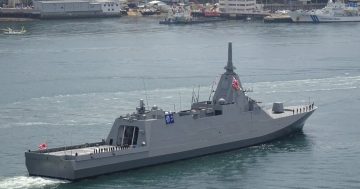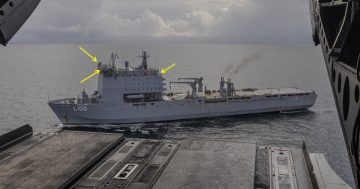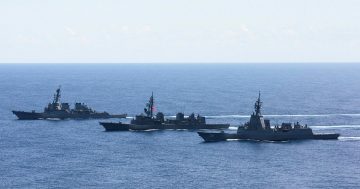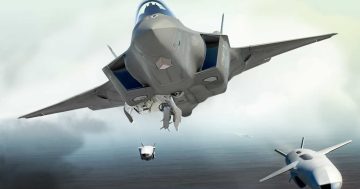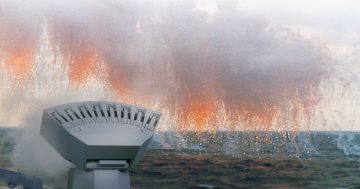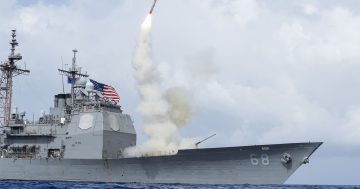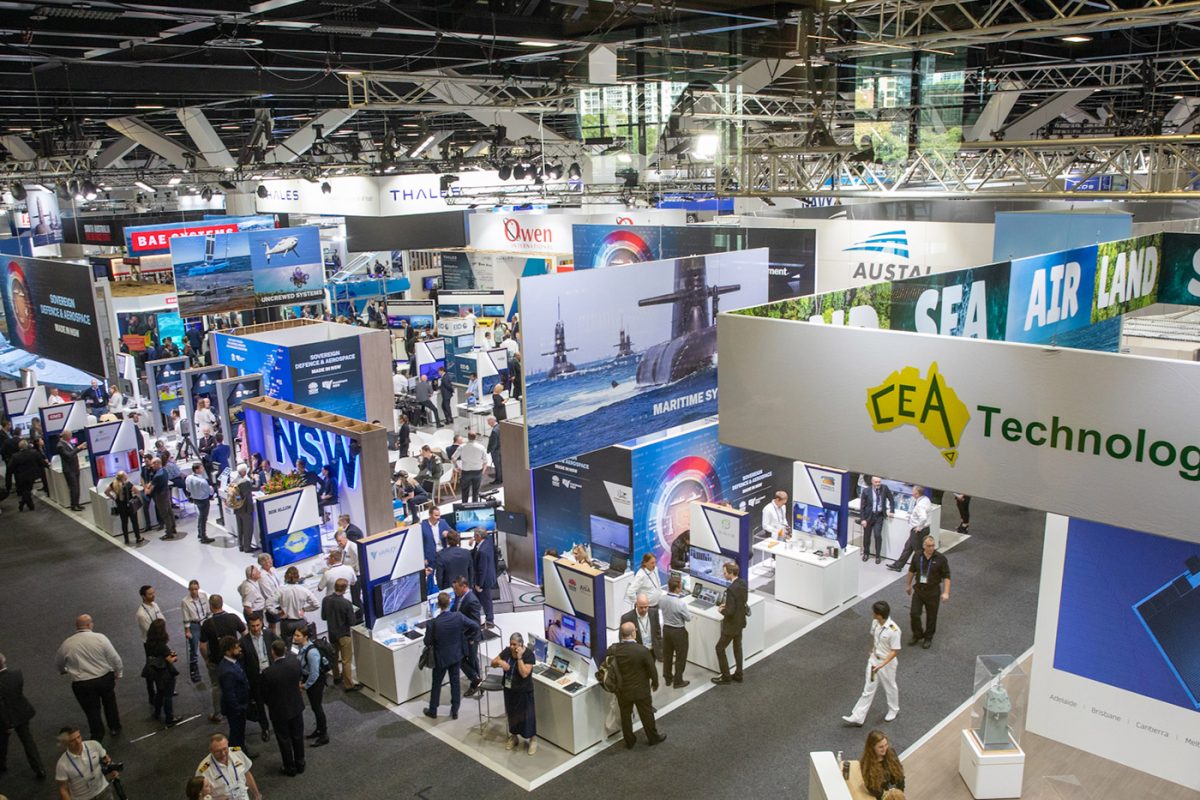
The 2023 Indo-Pacific maritime exposition covers more than 19,000 square metres of exhibition space. Photo: AMDA Foundation.
The 2023 iteration of the biennial Indo-Pacific Maritime Exposition opened in Sydney on Tuesday (7 November) to a record number of exhibitors, delegates and visitors.
Cast as the region’s premier commercial maritime and naval defence exposition, this year’s three-day expo takes up 19,000 square metres of floor space at Sydney’s vast International Convention Centre, and also incorporates the Royal Australian Navy’s Sea Power Conference at the adjoining Sydney Convention Centre.
The 832 participating exhibitors range from large multinational corporations showing off their latest weapons systems, right down to small engineering or services firms displaying their own unique capabilities.
The organiser, the AMDA Foundation, says more than 40 nations are represented at Info-Pacific 2023 and the show has tripled in size since it was first held in 2000.
On day one:
- Melbourne-based engineering firm Marand said it has successfully completed factory acceptance testing of the first launch ramp for the Royal Australian Navy’s new KONGSBERG Naval Strike Missile (NSM) system.
The NSM is being acquired to equip the Navy’s three Hobart class destroyers and eight ANZAC class frigates with a modern anti-ship missile under Project SEA 1300 Phase 1, and Kongsberg Defence Australia has sub-contracted engineering work for the NSM’s launch system to Australian industry.
“The local production of bespoke elements of complex weapon systems demonstrates the capabilities that reside in Australian small-to-medium enterprises,” the ADF’s Chief of Guided Weapons and Explosive Ordnance (GWEO) Air Marshal Leon Phillips said.
“In partnership with KONGSBERG, this is the first of many locally produced precision components that make up the weapon system.”
- US-based L3Harris has signed a strategic partnership agreement with Australian-owned NIOA to explore opportunities for the future assembly and manufacture of rocket motors, boosters and warheads for munitions from L3Harris’ Aerojet Rocketdyne subsidiary.
“As a 100 per cent Australian-owned company, NIOA is excited to be entering this strategic agreement with Aerojet Rocketdyne to address critical munitions priorities for Australia,” NIOA Group CEO Robert Nioa said. - Lockheed Martin Australia has completed design architecture update for the Royal Australian Navy’s Aegis combat system as used by its three Hobart class destroyers as part of Defence’s Project SEA 4000 Phase 6 Combat System Design Agent (CSD-A) contract.
The update paves the way for a larger upgrade to the Aegis Baseline 9 configuration, which will give the three vessels the ability to intercept incoming ballistic missile threats fired from hundreds or thousands of miles away.
“The Aegis upgrades will ensure Australia keeps pace with the US Navy’s Aegis modernisation program, increases combat system lethality, and advances interoperability with our allies across the Indo-Pacific region,” Lockheed Martin Australia and New Zealand chief executive Warren McDonald said. - Silicon Valley tech giant Anduril has teamed with 10 Australian suppliers for the Royal Australian Navy’s Ghost Shark extra-large autonomous underwater vehicle (XL-AUV) program.
The company is building several prototypes of the Ghost Shark in Sydney with assistance from the Defence Science and Technology Group (DST) and the Navy.
“We’re tapping into a wider set of Australian industries: mining, medical, retail and consumer products. We come to manufacturing with a commercial mindset,” Dr Shane Arnott, senior vice president of engineering at Anduril Industries, said.
“Leveraging a wider supply base and different thinking to that of the ‘Jurassic’ defence primes to achieve the key goal of affordable mass.”
- Australian specialist boat builder The Whiskey Project has unveiled an armed reconnaissance and strike watercraft prototype concept developed with Israel’s Rafael Advanced Defense System.
The 11.9-metre Whiskey Bravo – Strike is designed to conduct offensive fires and precision strike missions against maritime and land targets and integrates a quad Rafael Spike NLOS missile system with advanced sensors and communications. - BAE Systems has unveiled a concept for a guided-missile derivative of its Hunter class anti-submarine warfare frigate design currently under development for the Royal Australian Navy.
The concept sees the standard Hunter class substantially upgraded with an increase in its Mk41 vertical launch systems (VLS) cell count from 32 to 96 with the insertion of a 64-cell VLS module in place of the mission bay forward of the hangar and reduction of some anti-submarine warfare capabilities.
With the Navy’s surface fleet review and the future of the Hunter class under review by the government, BAE says it could switch to the alternate design from the fourth of the planned build run of nine Hunter class vessels.
The exhibition runs until 9 November.












